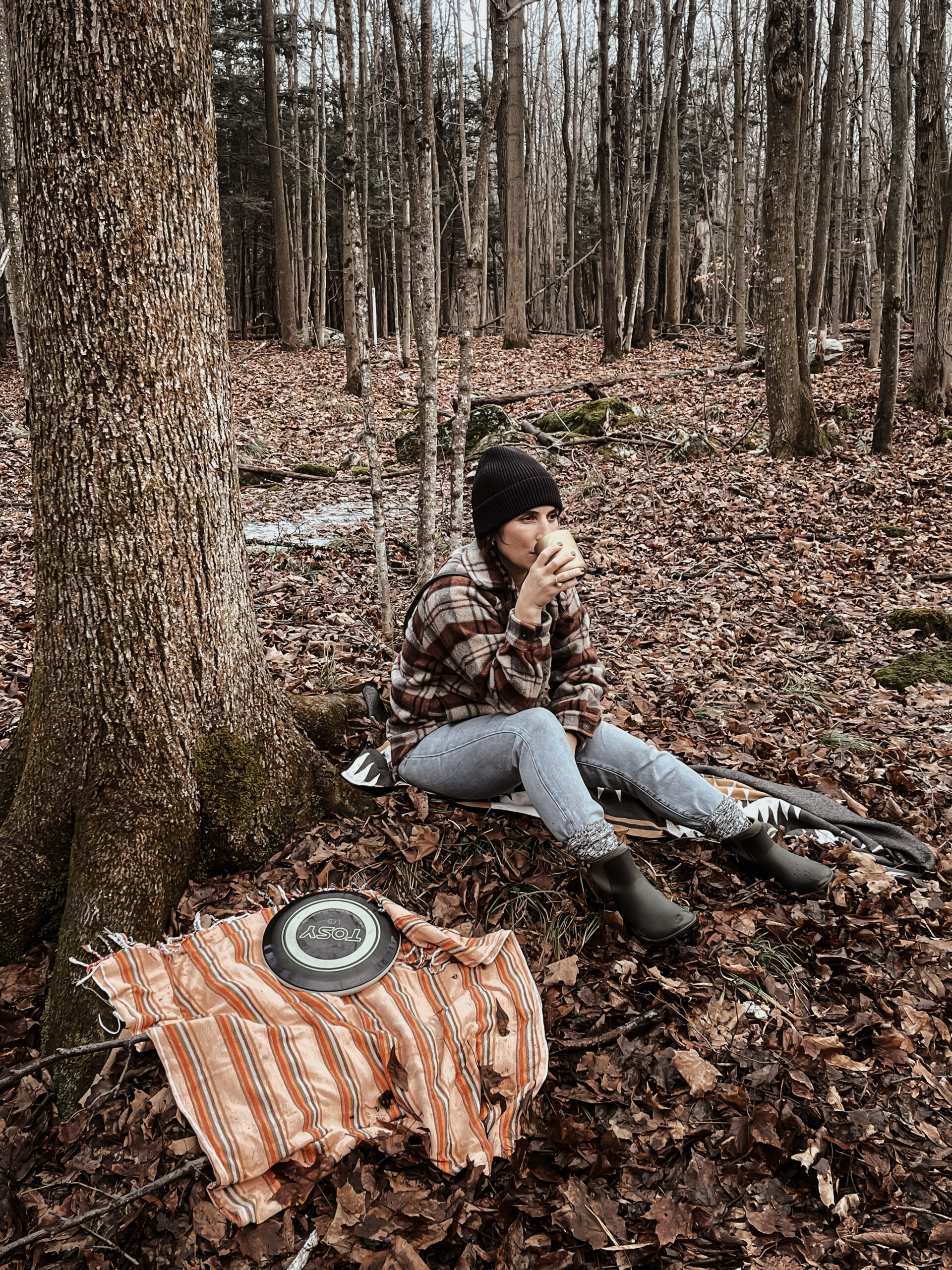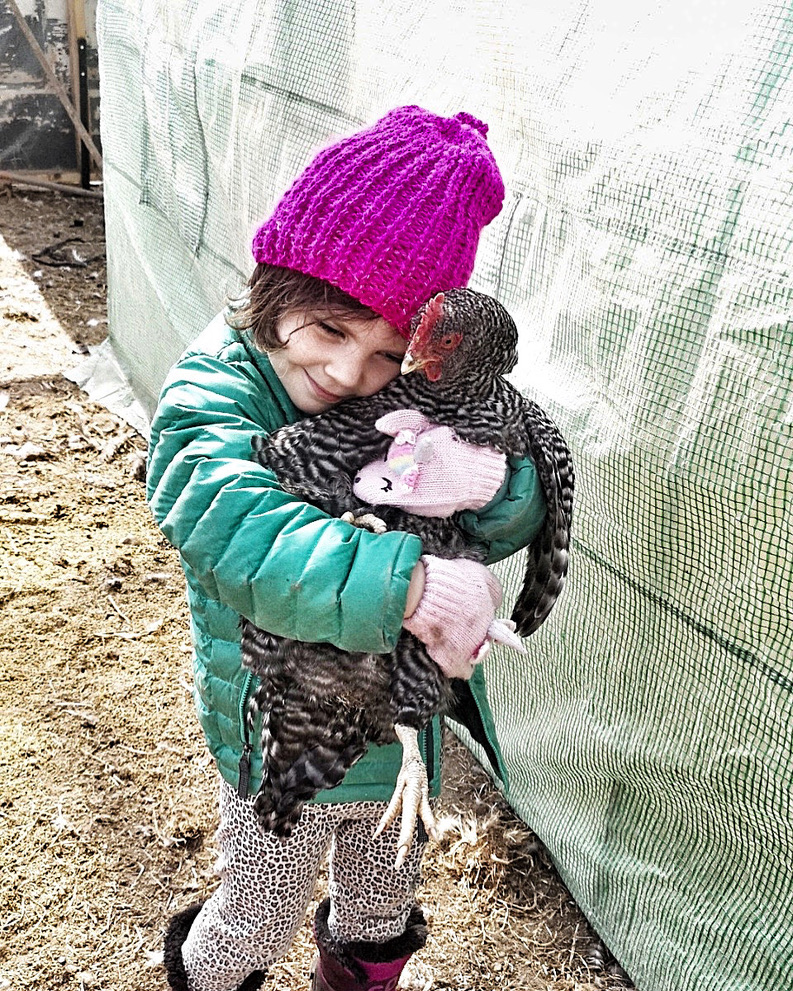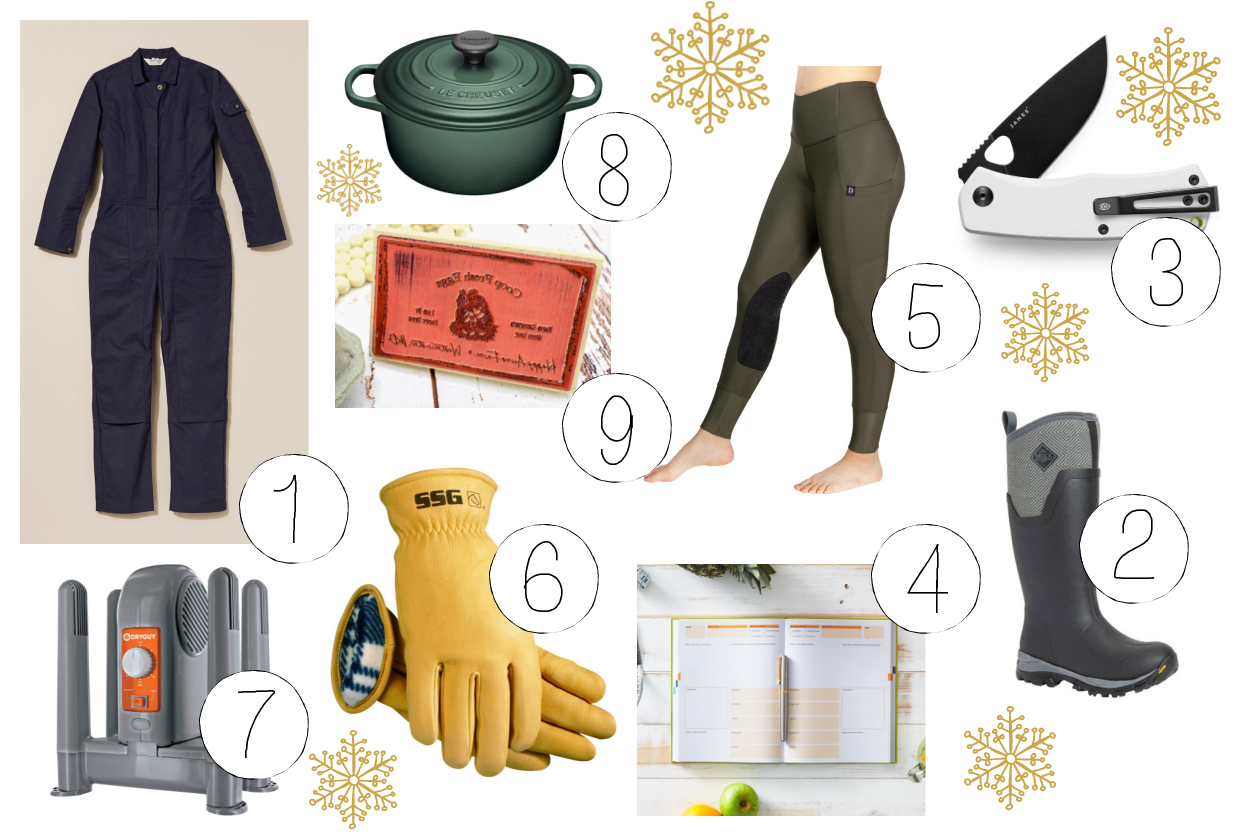A Pig, a C-Section and Returning Home
This spring, the children and I settled back into the farm. We’d been gone for a minute—we had taken an eight-month-long adventure to beautiful British Columbia, where, if I’m being honest, I had gotten comfortable with my biggest challenge being sorting the recycling (it is a NEXT LEVEL assignment out west). My days consisted of very decent lattes via Their There (a.k.a. Hundy’s), dog-walking oceanside finished off with the likes of Ask for Luigi’s boar ragu delivered to our porch.
I got soft (inside and out, really)—reliant on city life, disconnecting with so many of the things that had become important to me. I was turning small problems into big ones, focusing on the wrong things. I watched them balloon up in front of me, as I whispered to my children, “Keep quiet. Don’t disturb the neighbours. Don’t yell. Don’t throw the ball so hard.”
I read somewhere once that you must “choose your hard”. There are different levels of hard—it’s a matter of perspective. Surviving is going to get harder—the way that we, as a privileged population, tend to search for comfort—I don’t know if this is the best way to grow. I think that our children will be faced with some serious dilemmas that they need to be prepared for. Forging forward with blinders on isn’t going to do much good in the long run. These thoughts brought me to one realization: it was time to go home.
Farming is hard. A homestead—a small farm is more than the Instagram shot—it’s a hopeful project based on a series of small defeats. The tool that breaks, the wind that stings, the perfectly healthy animal that dies. But the jagged beauty of the farm holds you in place. The romance of a foggy evening, the way the grass seems to flush emerald in a midsummer rain. There is possibility—I could ride my horse into the woods or outrun a hormonal sow or shovel unending amounts of manure. So, here I am. Knee deep at Old Wood Hollow, so busy I can barely breathe. Which brings me to my story.
When I got home, our employee, Shannon, eagerly handed the reins back to me. It had been a long fall, a longer winter and a tortuous spring of holding the farm altogether, not knowing if/when we were coming back. The fences were falling apart, from the constant escape efforts of our mangalitsa pigs. Both boars were housed in the sheds, as they had attempted several escapes (one boar was sold already, waiting on transport). The horses were safe enough, given that they had been boarded and the greenhouse was filled to the brim with tomato seedlings that were desperate to be repotted.
What I didn’t know, was that during these escape attempts, our resident boar Boris, and our second boar, Derek, had broken into the sow pen, far before scheduled breeding. One of them had mated a gilt that wasn’t ready to be bred at the time, as well as a mature mangalitsa sow, Chloe. About two months before she was due, I found Chloe lying down in the meadow, wee piglets squirming all about her. We had just loaded up our latest lot for the abattoir and I panicked, thinking of the three females that were now trailered, making their way down the highway. I called the abattoir in a panic, thinking I had sent expectant mothers on their way. BUT they were fine, not pregnant—crisis averted. Or so I thought.
After the pigs go off to meet their end, I breathe a sigh of relief. There’s a three-to-six-month lull in in for me—my pigs are only ready to go every 24 months or so. So the next morning, I walked out into the fields, my youngest son teetering behind me, my daughter not far behind. The sun was starting to settle into the grass, adding a sparkle to the dew. The pigs were honking in the far field, the way they do as soon as they spot a human headed their way between the hours of five and nine. Except one wee pig, who was lying in the middle of the field, her belly bulging under the black curls that make up her coat. Reaching her, I could see a tongue protruding from her vaginal area. A gosh-darned tongue.
She was giving birth.
Or trying to.
But this couldn’t be right. She was far too tiny. Too young. Maybe 10 months old.
My own children beside me, I dropped to my knees to access the situation. That baby inside her was nearly gone. Soon to be. My oldest son ran for iodine and gloves (a six-year-old), can you imagine? We spent the next eight hours trying to save that pig.
Eight hours—a pig usually finishes her labour in 20 minutes. This teenage piglet, Tully, couldn’t process what was happening. I lost the first piglet, then pulled four more, barely alive. Tully wouldn’t nurse, wouldn’t let us get her out of the gen-pop pen. She was wading through mud, other barrows and gilts, frustrated with me, elbow deep, trying to salvage the situation.
Here’s something else—there aren’t many veterinarians who will treat pigs—never mind pastured pigs. We were lucky enough to be able to have a bovine vet willing to try and help us, but even with his help, we were unable to extract the last piglet. And so, the vet executed a c-section—a procedure that he hadn’t performed in nearly twenty years. That last little piglet inside of Tully was a fighter, he was biting and pushing—but he was too big. Even with her on her back, there was nothing to do as I felt both him and his mother fading away. The c-section was performed, but there was too much fluid, a good indication that Tully was already septic. But I needed Tully—she needed to feed her babies colostrum—or they weren’t going to make it either. In the meantime, we kept them warm, feeding them bovine colostrum, bought in a hurry at the feed store in town.
Tully knew she had one more job—just one more. Animals aren’t distracted by all the bullsh** that humans are, I think. She was fading, but she was focusing. She laid down, eight hours later and fed her babies what she had for her last 24 hours. The following morning, she crawled to the other side of the nursery and went to sleep, succumbing to her injuries. She left me babies that had a chance. I carried them into the house, hunkering down to feed them every four hours (It was like nursing all over again—I don’t know how I did it. Three times. Honestly.)
And they survived. They are here, now with me. I swear that they have hair that curls a little differently—I can point them out a mile away.
You May Also Like

2024: Resolutions for Old Wood Hollow Farm
1 January 2024
Dealing with Death on the Farm: 5 Books About Death for Children
16 November 2021
